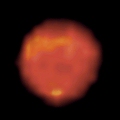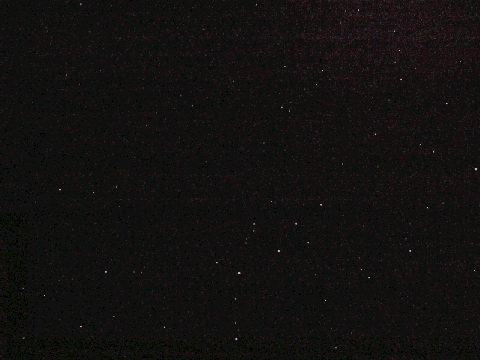Mars: Picture Gallery
Mars, perhaps the only planet in the solar system besides Earth to have borne life, is a frustrating object to observe. It is quite small (only 4211mls across), the times when it is close to Earth are separated by more than two years and its considerably eccentric orbit means that it is only really close once every 16yrs or so. However, 2003 was an annus mirabilis in this sense because the time of closest approach to Earth coincided almost exactly with Mars being at its nearest to the Sun. They were therefore the closest they have been for quite some time - 10,000yrs in fact! It was thus possible to see features on its surface with relative ease and even track them as they moved with the planet's rotation. The only downside was that, being summer, Mars was quite low in the sky and so observations were more likely to be upset by disturbances in the atmosphere.
The four images below are centered (approximately) on Martian longitudes 20, 305, 270 & 170 and so show almost all of the planet's surface. In each case, the right-hand edge of an image joins with (or overlaps) the left-hand edge of the one following it. The south polar cap is well seen in three of the images.
 |  |  |  |
| To the north, Mare Acidalium juts towards Mare Erythraeum in the centre with Meridiani Sinus to the right. | The distinctive outline of Syrtis Major is at top right with Sinus Sabeus curving to the left. Hellespontus can just be glimpsed to the top left of the polar cap. | The circular desert, Hellas, sits between the polar cap and Syrtis Major. Mare Tyrrhenum & Mare Serpentis embrace the desert to right and left. | The bright expanse of Elysium and the great Amazonis desert highlight Mare Sirenum below. Mare Cimmerium sits to the far left. |
| |
 | And here we have "the image in a thousand" (almost literally!). Atmospheric conditions must have been almost perfect when it was captured, giving a wealth of detail. The features seen are similar to the second image above (it was in fact taken on the same evening) but are much clearer and have greater contrast. At the left, Sinus Sabeus and Pandorae Fretum encircle the bright spot of Deucalionis Regio. The dark Mare Serpentis leads onto Deltonon Sinus before Syrtis Major splits off to the north leaving Mare Tyrrhenum to continue round the equator. You might say I was rather pleased with this one! |
| |
| Mars rotates in 24hrs 37mins and so during an observing session of several hours the movement of surface features is quite noticeable. With their much faster rotation Jupiter & Saturn should be even more changeable but the absence of large-scale features makes this less obvious. |  |
| |
 | Such is the eccentricity of Mars' orbit (and because the Earth moves quite quickly away from it), less than 1month after opposition its apparent diameter has shrunk by one-eighth. This illustrates why opportunities for favourable viewing are so short and are thus eagerly sought. |
| |
| This animation is constructed from views taken at different times on different days, assembled to show the rotation of the major features across the planet. Mare Sirenum first comes into view, followed by Mare Cimmerium & Mare Tyrrhenum. Syrtis Major crosses the disc and finally we get a glimpse of Sinus Sabeus. |  |
As the mean distance of Mars from the Sun is only about 11/2 times that of the Earth, it goes round the Sun quite quickly and so, as seen from Earth, moves across the sky much more rapidly than the other outer planets. Its path is not a simple one though, as complications are caused by the fact that we are viewing it from a position that is moving faster i.e. from the Earth. I have described the various phenomena that result on another page [click here for more information] but one of the most clearly visible results is that Mars describes a loop in the sky near to opposition. I decided to undertake a project to capture the 2007/08 loop so took a picture of Mars against the starry background approximately weekly for over 6months and combined them together in an animation, seen below.
 | Click or tap on the image to start the animation. The sequence ends with a line showing the track taken by Mars over the entire period.
Note that not only does Mars describe a loop but it also gets much brighter before fading again. This is a result of it coming much nearer to the Earth at opposition, an effect analysed (in some depth!) on the page mentioned above. |








